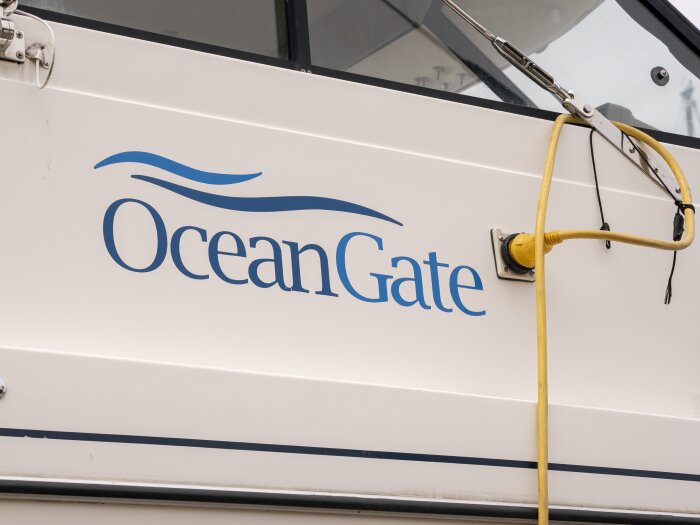
Heather Exner-Pirot is the Director of Energy, Natural Resources and Environment with the Macdonald-Laurier Institute (RIGHT WING THINK TANK)
By Heather Exner-Pirot
June 08, 2024
Three decades of progressive Arctic collaboration were upended in February 2022, when Russia invaded Ukraine. Putin had behaved contrary to international norms and laws before, including with the 2008 Georgian and 2014 Crimean conflicts; but this time was different. Work was immediately paused in the Arctic Council as diplomats tried to figure out their response, as they’ve been doing ever since.
The extent to which Arctic scientific collaboration should continue under such circumstances has been an open question. Climate change, transboundary pollution, melting permafrost and nuclear deterrence seem too important to defer to a later time. Should researchers continue to collaborate with their Russian counterparts on these and other key issues, even as state relations are on ice?
The case of Finnish political scientist Lassi Heininen shows that this question is not theoretical; these are real life puzzles to figure out. We have not passed the first test with flying colours.
Dr. Heininen is a colleague of mine; we founded the Arctic Yearbook together. There are very few researchers of Arctic geopolitics and security who are not colleagues of Heininen. He is not a rogue actor in Arctic studies; indeed he’s often been at the center of it, from advising the Finnish Senior Arctic Official during their Arctic Council chairmanship; to carrying the Finnish flag to the North Pole alongside the other seven Arctic state flag bearers aboard the Russian icebreaker 50 Years of Victory ahead of the Sochi Olympics; to sitting on the advisory council of the Arctic Circle Assembly, the region’s most prestigious annual conference. His nickname is “Mr. Arctic”; he is a fixture on the scene.
Heininen has guest lectured on Arctic geopolitics at dozens of universities over the years, in North America, Europe and Asia. He has hosted hundreds of scholars on his annual Calotte Academy, a social sciences field trip through northern Europe, which most years has passed through Murmansk. He has supervised dozens of graduate students, and mentored many more, building the next generation of Arctic scholars.
Heininen has always maintained strong relationships with Russian colleagues and has lectured in several universities in Russia. Until February 2022, of course, this was applauded. Arctic research was meant to be inclusive of the Russian perspective. Arctic grant funding often weighed in favour of Russian partnerships, and sometimes even required it. Heininen was a leader in all this. For many of us, the war abruptly cut all connections to Russians; Heininen’s ties were deeper.
And so, to the case that has created the maelstrom. Heininen attended a conference on March 5, 2024 in Moscow. It was organized by the Northern Forum, an NGO that focuses on regional Arctic development. The Northern Forum was established in Alaska in 1991, in the wake of the Cold War, and retains Observer status in the Arctic Council, although its members now lean heavily Russian. Heininen’s talk focused on prospects for cooperation on climate change between the West and Russia
A Finnish newspaper reported on his participation. Very soon afterwards, his emeritus status at the University of Lapland, which is an unpaid position, was revoked (Heininen retired as a Professor there in 2018).
It is not clear that Heininen violated any Finnish policy that would justify the termination of his contract. Indeed, the University of Helsinki – where Heininen is also a Visiting Researcher – came to a different decision on his case after a review of the facts, and pursued no further action.
Some Arctic states have imposed restrictions preventing individual researchers from working with the Russian government or Russian institutions (of which the Northern Forum, strictly speaking, is not one). Others, including the United States (which has been deliberately agnostic) and Canada (which has no broad-based ban on collaborations with individual Russian researchers), have treaded more lightly. The Finnish policy is amongst the strictest. Still, Heininen is appealing the ULapland decision on the grounds that he did not violate it.
Heininen’s case forces us to answer two important questions.
First, in the wake of the Ukraine war, should academics be punished for engaging in research with Russian colleagues that is not illegal? Even if you disagree with Heininen’s decision, termination of his position for attending a conference seems to go too far. I personally would not have travelled to Moscow for a conference; indeed my own Canadian think tank has been blacklisted by the Russian government and I cannot. But I respect Heininen’s right to make that decision for himself, as the principle of academic freedom demands. Indeed one could argue this is one of the hallmarks that distinguishes our societies from Putin’s Russia; as is the right to due process when we are accused of violating policies.
More fundamentally, this episode has us ask what is the role of the scientific community in eventually resuming relations with Russia.
The Arctic Council has already taken incremental steps towards reinstituting its work, beginning with the pause in March 2022, then written correspondence for its Working Groups in August 2023, and finally virtual meetings starting in February 2024. I’ve argued that the Arctic Council should move on without Russia, rather than remain trapped in purgatory. But cooler heads have prevailed, arguing that the value of scientific collaboration on Arctic environmental and sustainable development issues is too valuable to give up. Surely the standards for individual researcher engagement should be more permissive than what states themselves are allowing.
Indeed, that is one of the lessons from the Cold War: Arctic scientific cooperation provided a foundation for detente, and eventually paved the way for the normalisation of state relations in the region; the famous zone of peace.
We are very far from that today. But one day there will be a Russia without Putin, and when that day comes it will be in our interests to have some ties between western and Russian scientists, both to provide avenues for cooperation, and to help build confidence. When that day comes we will need more Lassi Heininens; it will not do to expel them today.




















